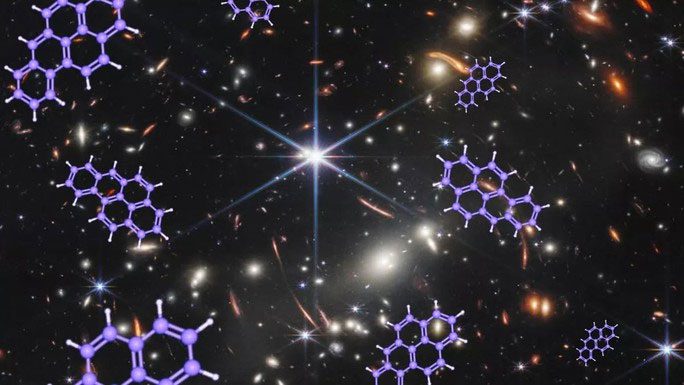The world’s most powerful space telescope has discovered a treasure trove of diamonds, both literally and figuratively: the backbone of all life in 10 galaxies approximately 12.8 billion years old.
According to Space, the James Webb Space Telescope, developed and operated by NASA, has identified diamond-like carbon dust in galaxies that may have formed just a few hundred years after the Big Bang that birthed the universe.
This early detection of carbon dust could shake the foundations of theories surrounding the chemical evolution of the universe.

Diamond-like carbon dust discovered by James Webb thanks to its time-traveling imaging capability – (Photo: NASA).
Previously, it was believed that the processes that create and disperse heavier elements like carbon would take much longer, making it impossible to exist in such young galaxies.
This remarkable discovery comes from a time-traveling survey of 10 ancient galaxies. Essentially, the images we see of an object correspond to the time it takes for light from that object to reach us.
By looking far into regions billions of light-years away, James Webb has brought back images from 12.8 billion years ago, when these galaxies were still very young in a universe that was also quite young.
The carbon dust they observed has even developed into polycyclic aromatic hydrocarbon (PAH) molecules, which seems unbelievable for nearly 13 billion years ago.
As many other studies have shown, the universe after the Big Bang was extremely homogeneous, primarily composed of hydrogen and helium.
According to widely accepted theories, heavier elements were only synthesized later, thanks to millions of generations of stars. The cores of these stars act as reactors that create heavier elements, which are then released into the universe when the stars die and explode.
Dr. Joris Witstok from the University of Cambridge (UK), the lead author of the research team that identified PAH with this James Webb data, suggests that we may need to start considering previously unknown objects and physical events that could create these strange PAH carbon particles.
Carbon is also the “backbone of all forms of life” that could arise in these 10 galaxies, the research team emphasizes.
This implies that primitive life may have begun to gestate in the universe much longer ago than we previously thought; and Earth’s life is still very young compared to life on exogalactic planets.


















































